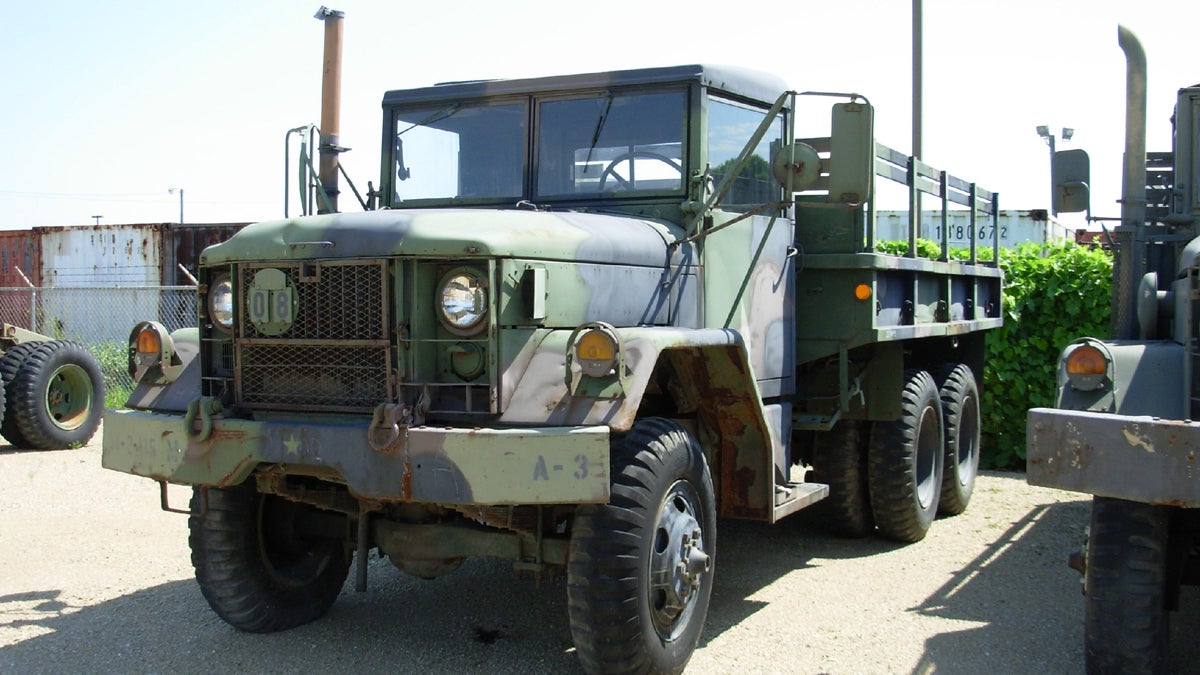After Sandy, some N.J. towns use surplus military gear for storm protection

A 2.5-ton M35 military cargo truck, also known as a deuce and a half, which is similar to the vehicle used by the Mantoloking Police Department. (Image courtesy of Wikimedia Commons' user Nobunaga24)
Police departments across the country, including some in this region, are getting free surplus military equipment through a federal initiative called the Law Enforcement Support Organization 1033 program.
The gear can range from armored vehicles and night-vision goggles, to sleeping bags and musical instruments.
But after Superstorm Sandy, some New Jersey police departments are using the equipment to shore up their storm response capabilities.
“We would have been stranded if we did not have this vehicle,” said Mantoloking Police Lt. John Barcus. When floodwaters rose during Sandy, the department’s SUV was disabled. So Barcus and his officers deployed a deuce and a half, a military transport truck the town got through the 1033 program, to rescue stranded residents.
“We used it to evacuate several civilians who were trapped in their homes,” Barcus said. “We used it to drive through the high water and the debris and whatnot to get to the homes or to the areas where the homes were.”
The town also used four bulldozers it obtained through a related federal program to rebuild sand dunes in the days following the storm.
But after police in Ferguson, Missouri, made national headlines this summer by responding to protests using heavy combat gear, people across the country began to question whether the military’s hand-me-downs belong on American streets.
“We always have to remember that, in the public eye, this is equipment that is made and functions for war-making,” said Dr. Jess Bonnan-White, assistant professor of criminal justice at Stockton College. “And so, in the end, when people see this equipment, that’s going to be their first thought.”
Even though Mantoloking has vowed not to use the equipment for tactical purposes, Bonnan-White said the town will still have to get past the negative public perception first.
“I think in the end what’s really important — and one of the lessons we got from Ferguson — is that communication is really key,” she said.
“We have to tell people why we use this type of equipment.”
WHYY is your source for fact-based, in-depth journalism and information. As a nonprofit organization, we rely on financial support from readers like you. Please give today.




